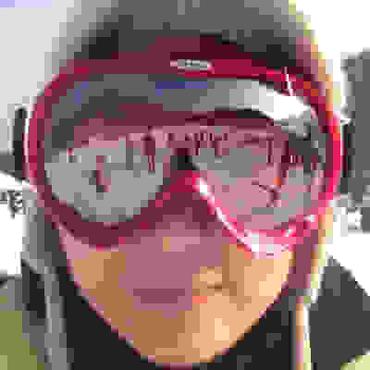Search Results for author: Max Ehrlich
Found 11 papers, 3 papers with code
Action-Affect Classification and Morphing using Multi-Task Representation Learning
no code implementations • 21 Mar 2016 • Timothy J. Shields, Mohamed R. Amer, Max Ehrlich, Amir Tamrakar
We propose a new model that enhances the CRBM model with a factored multi-task component to become Multi-Task Conditional Restricted Boltzmann Machines (MTCRBMs).
Deep Residual Learning in the JPEG Transform Domain
1 code implementation • ICCV 2019 • Max Ehrlich, Larry Davis
We introduce a general method of performing Residual Network inference and learning in the JPEG transform domain that allows the network to consume compressed images as input.
Quantization Guided JPEG Artifact Correction
1 code implementation • ECCV 2020 • Max Ehrlich, Larry Davis, Ser-Nam Lim, Abhinav Shrivastava
The JPEG image compression algorithm is the most popular method of image compression because of its ability for large compression ratios.
Analyzing and Mitigating JPEG Compression Defects in Deep Learning
no code implementations • 17 Nov 2020 • Max Ehrlich, Larry Davis, Ser-Nam Lim, Abhinav Shrivastava
We show that there is a significant penalty on common performance metrics for high compression.
Unsupervised Super-Resolution of Satellite Imagery for High Fidelity Material Label Transfer
no code implementations • 16 May 2021 • Arthita Ghosh, Max Ehrlich, Larry Davis, Rama Chellappa
Urban material recognition in remote sensing imagery is a highly relevant, yet extremely challenging problem due to the difficulty of obtaining human annotations, especially on low resolution satellite images.
ReLaX: Retinal Layer Attribution for Guided Explanations of Automated Optical Coherence Tomography Classification
no code implementations • 3 Sep 2021 • Evan Wen, Rebecca Sorenson, Max Ehrlich
While previous works use pixel-level attribution methods for generating model explanations, our work uses a novel retinal layer attribution method for producing rich qualitative and quantitative model explanations.
A Frequency Perspective of Adversarial Robustness
no code implementations • 26 Oct 2021 • Shishira R Maiya, Max Ehrlich, Vatsal Agarwal, Ser-Nam Lim, Tom Goldstein, Abhinav Shrivastava
Our analysis shows that adversarial examples are neither in high-frequency nor in low-frequency components, but are simply dataset dependent.
Leveraging Bitstream Metadata for Fast, Accurate, Generalized Compressed Video Quality Enhancement
no code implementations • 31 Jan 2022 • Max Ehrlich, Jon Barker, Namitha Padmanabhan, Larry Davis, Andrew Tao, Bryan Catanzaro, Abhinav Shrivastava
Video compression is a central feature of the modern internet powering technologies from social media to video conferencing.
The First Principles of Deep Learning and Compression
no code implementations • 4 Apr 2022 • Max Ehrlich
This allows the incredible advances in deep learning to be used for multimedia compression without threatening the ubiquity of the classical methods.
NIRVANA: Neural Implicit Representations of Videos with Adaptive Networks and Autoregressive Patch-wise Modeling
1 code implementation • CVPR 2023 • Shishira R Maiya, Sharath Girish, Max Ehrlich, Hanyu Wang, Kwot Sin Lee, Patrick Poirson, Pengxiang Wu, Chen Wang, Abhinav Shrivastava
This design shares computation within each group, in the spatial and temporal dimensions, resulting in reduced encoding time of the video.
Explaining the Implicit Neural Canvas: Connecting Pixels to Neurons by Tracing their Contributions
no code implementations • 18 Jan 2024 • Namitha Padmanabhan, Matthew Gwilliam, Pulkit Kumar, Shishira R Maiya, Max Ehrlich, Abhinav Shrivastava
We call the aggregate of these contribution maps the Implicit Neural Canvas and we use this concept to demonstrate that the INRs which we study learn to ''see'' the frames they represent in surprising ways.








